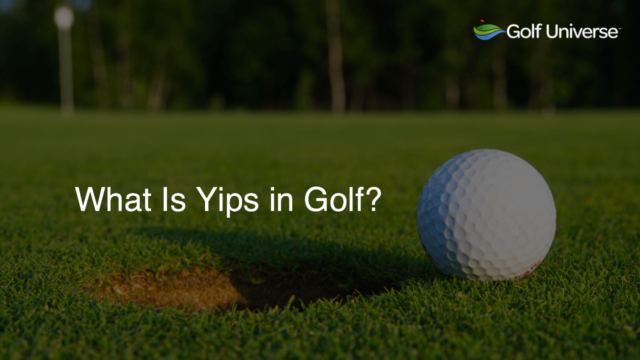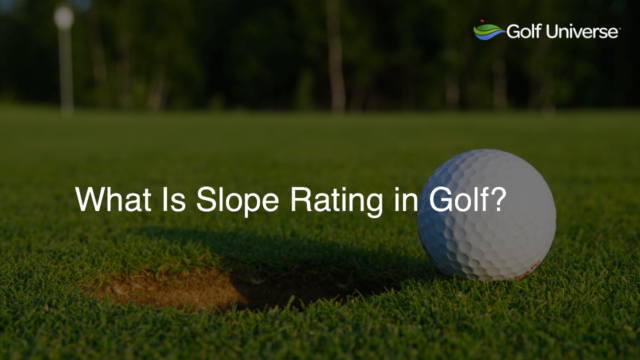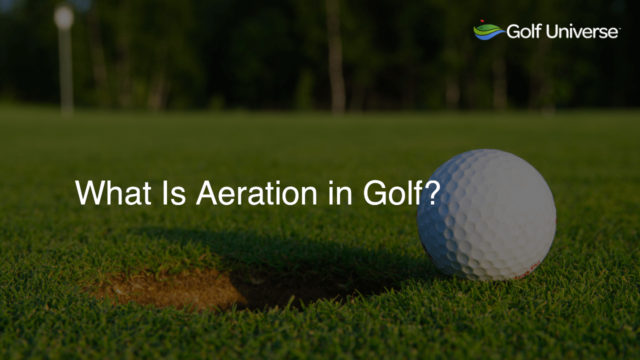Underclub in golf refers to selecting a club with less distance and power than required for a specific shot, often resulting in the ball falling short of the intended target.
Understanding Underclubbing in Golf
Underclubbing is a term used in golf to describe the situation when a golfer selects a club that does not have the necessary distance or power to reach their intended target. It typically results in a shot that falls short, leading to potential challenges in reaching the green or avoiding obstacles.
Causes of Underclubbing
There are various reasons why golfers may underclub, but some common factors include:
- Misjudgment of distance: Underestimating the distance to the target can lead golfers to choose an inappropriate club for the shot.
- Wind conditions: Failing to account for the impact of wind can result in underclubbing, as strong headwinds may require more club power to reach the target.
- Elevation changes: Not considering elevation differences, such as playing uphill or downhill, may lead to selecting the wrong club.
- Conservative play: Some golfers deliberately choose a club with less power to avoid overshooting their target or to play safer, occasionally resulting in underclubbing.
How to Avoid Underclubbing
To minimize underclubbing, golfers should:
- Know their club distances: Being aware of their average distances with each club can help golfers make more informed club selections.
- Assess the conditions: Taking the time to factor in elements like wind and elevation can improve club choices and mitigate the risk of underclubbing.
- Use a rangefinder: A rangefinder or GPS device can provide accurate distance measurements, helping golfers choose the right club for each shot.
- Practice course management: Developing a strategy for each hole and identifying specific targets to ensure proper club selection can help reduce underclubbing occurrences.
Underclubbing Consequences
By underclubbing, a golfer may face negative consequences such as:
- Increased difficulty in reaching the green or target
- Delayed recovery from poor shots
- Higher scores due to missed opportunities or additional strokes
- Mental frustration and stress from underperforming
Ultimately, understanding and addressing underclubbing issues can contribute to improved performance and more enjoyable rounds of golf.
The Impact of Underclubbing on Golf Scores
Underclubbing may not seem like a significant issue, but it can drastically affect a golfer’s overall scores during a round. Repeatedly underclubbing can put a player in difficult recovery situations, lengthening approach shots and reducing the chances of pars or birdies. Proper club selection, as promoted in blogs like Golf Universe, can shave strokes off your game and improve consistency.
Expert Advice from Golf Universe
Here at Golf Universe, we believe that understanding the nuances, terms, and strategies behind the wonderful sport of golf is the key to improving your game. We create content covering a wide range of golf topics to assist golfers of all skill levels in mastering the intricacies of the game.
Utilizing Swing Analysis Tools
Golf Universe recommends using golf swing analysis tools to track your shot distances and identify any inconsistencies in your game. These tools can provide valuable data on your swing, clubhead speed, and carry distances, enabling better club selection and reducing the likelihood of underclubbing. Equip yourself with the knowledge and tools provided by Golf Universe to make informed decisions on the golf course.
Learn from the Best
Watching and learning from professional golfers can also provide valuable insights into proper club selection. Analyzing their strategic choices and course management techniques can offer useful information that golfers can apply to their game. As avid golf enthusiasts, the team at Golf Universe constantly shares expert opinions, tips, and analysis through our blog, helping you learn from the best in the sport.
Frequently Asked Questions
We’ve compiled a list of frequently asked questions that arise after reading our blog post on underclubbing in golf. Check out these concise answers for further clarification and understanding.
What is the opposite of underclubbing?
The opposite of underclubbing is overclubbing, which occurs when a golfer chooses a club with too much distance or power, causing the ball to overshoot the target.
How does the lie of the ball impact club selection?
The lie of the ball, or its position on the ground, can impact club selection, as unfavorable lies may require adjustments in club loft or type to execute a quality shot.
What role does the type of golf ball play in underclubbing?
The type of golf ball can influence underclubbing, as certain balls provide varying levels of distance, spin, or control that may require club adjustments to accomplish the desired shot outcome.
What factors besides club selection can help address underclubbing?
Aside from club selection, golfers can address underclubbing by refining their swing technique, developing better course management, and improving their distance control with each club.
What type of clubs are more prone to underclubbing?
Long irons and fairway woods tend to be more prone to underclubbing, as these clubs have a lower launch angle and require more precision, making it easier to misjudge distance and power needed for a shot.











